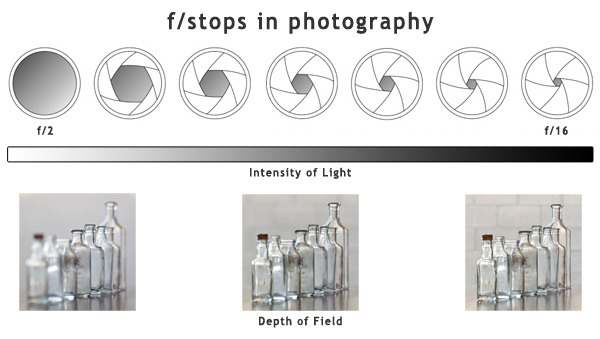

changing from F11 to F16, will give you approximately 40% more depth of field. In general, closing the aperture by 1 stop, e.g.

The smaller the aperture, the less light that enters the lens from all sources. This is sometimes true, but when doing macro photography, the DOF lies equally in front and behind the focal point.Īffects ambient light and strobe light. In nature photography, people are often told that the depth of field lies 1/3 in front of the focal point (closer to the camera), and 2/3 behind the focal point. Look at the first two photos below, in the last section on this page, and you can clearly see the areas that are in focus, which lie within the depth of field. The depth of field extends in front of this point, towards the camera, and behind this point. This area, parallel to your camera lens, is called the focal plane. The sharpest area of the photo is the location your camera focused on. Areas outside of the DOF are blurry, with the blurriness increasing the further away they are. The depth of field is the area of a photo that is in focus. F4 is one stop away from F2.8, so we "stopped down 1 stop."ĭepth of field (DOF) is an important concept.

going from F2.8 to F4, is called "stopping down," or closing the aperture. Let's look at the apertures that have a 1-stop difference, going from a large aperture to a small aperture. – F22), the aperture gets smaller.ĭecreasing the aperture by one "stop" will let in 50% less light. F8, F11, F16) and the amount of light that enters through the lens decreases. As the aperture is made smaller, the F-stop increases in number (e.g. Here is a slightly more techincal explanation. The size of an aperture is referred to as an F-stop. F2.8, which lets in the most amount of light. Each lens will have a largest aperture, e.g. The fact that the camera on your phone can go from f/1.8 to f/1.6 isn’t going to drastically improve your photography-only time and effort can do that.The aperture of your lens is an opening that can be made smaller or larger. The iPhone Photography Awards started 13 years ago because people have been shooting awesome photos with smartphones for as long as they’ve been around. Specs don’t take photos: As companies continue to throw around crazy numbers, just remember those aren’t what creates a good photo.
F stop photography iso#
This is because it can use faster shutter speeds ( for less blur) and lower ISO ( for less noise). The wider the fixed aperture of the lens, the better the images in low light. A wider aperture means better low-light photography: Due to how smartphone cameras are designed, the fixed aperture’s biggest effect is on the shutter speed and ISO the camera can use in different situations.However, the real focal length was just 6mm, so the hole was only 3mm wide. This would mean light would pass through a hole over 1 in.
F stop photography pro#
For example, Apple claimed the telephoto lens in the iPhone 11 Pro was 52mm with an aperture of f/2. F-stops are calculated from a lens’s real focal length: While the f-numbers manufacturers list are real, the focal lengths they boast for their lenses are normally a full-frame equivalent.Now that smartphone manufacturers are using these terms in their marketing, here are a few things everyone should keep in mind:
F stop photography professional#
Appleīoth amateur and professional photographers have had to come to terms with f-stops and aperture over the years. In a lens with a focal length of 100mm, the aperture would be 50mm (100/50 = 2) in a lens with a focal length of 200mm, the aperture would be 100mm (200/100 = 2).Īn f-stop is measured as a ratio due to some of the fun quirks in the physics of optics.į-stops and Your Phone That doesn’t look like a 26mm aperture hole to me. So, an f-stop of 2 (f/2) means the lens aperture is half the focal length. The f-stop is the ratio of the focal length of a lens to the lens aperture (the hole through which the light enters). RELATED: What Is Aperture? F-Stops Simplified Oleksii Arseniuk/Shutterstock Lowering the f-stop makes images brighter, while increasing it makes them darker. Most lenses allow you to adjust the f-stop, although smartphone cameras are an exception they have a fixed aperture. While shutter speed is measured somewhat intuitively in fractions of a second, aperture is measured in f-stops, such as f/1.6, f/11, and f/22. Shutter speed measures how long light is allowed to hit the sensor and ISO measures how sensitive the sensor is. It’s a measurement of how wide the hole is at the front of a lens and, thereby, how much light it allows in. Aperture is one of the three legs of the exposure triangle, along with shutter speed and ISO.


 0 kommentar(er)
0 kommentar(er)
